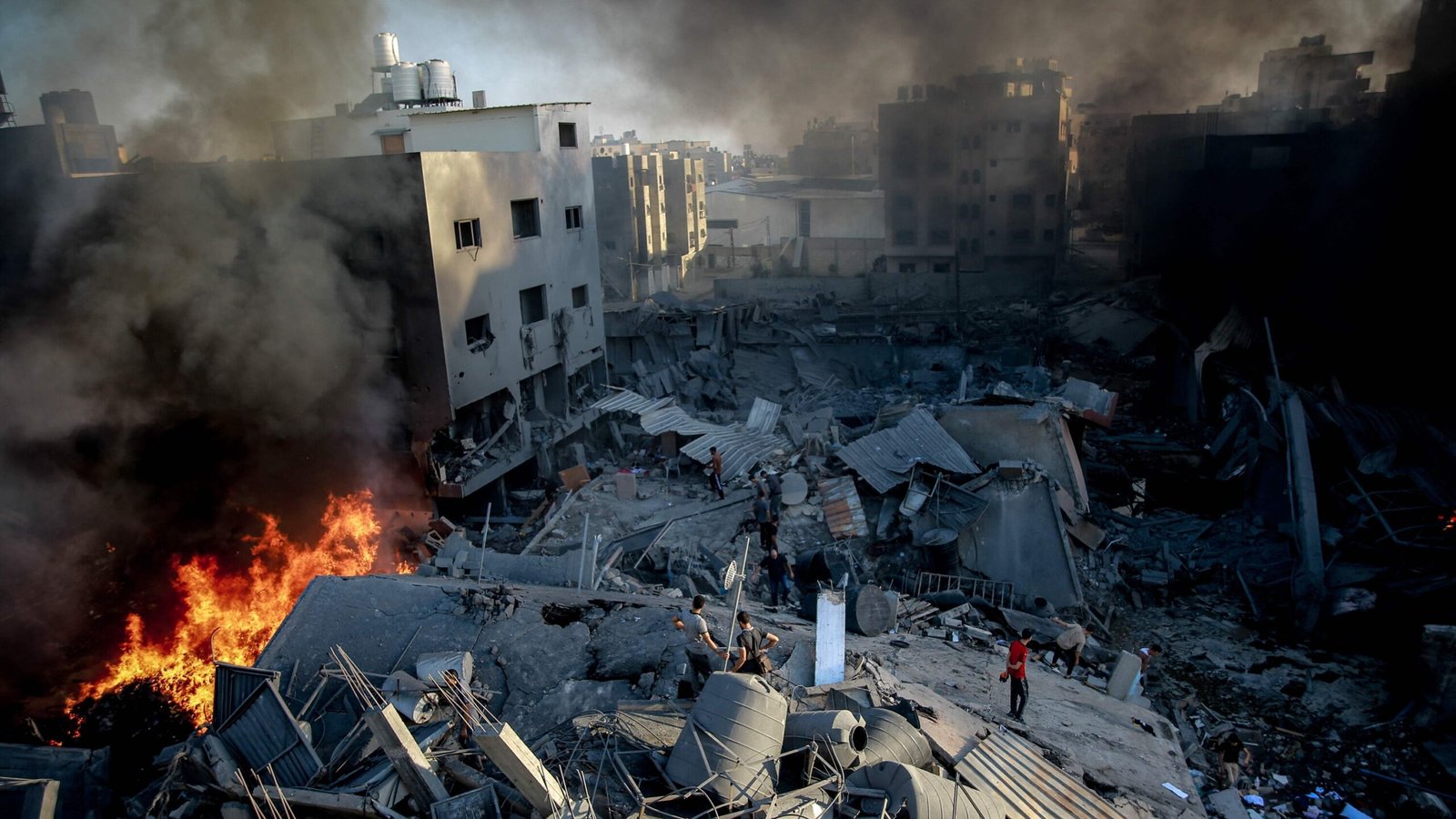In a world fraught with conflict, the idea of a ceasefire often feels like a distant dream. Yet, it remains an essential step towards peace and stability in war-torn regions. Advocating for a ceasefire is not just about halting violence; it’s about saving lives, protecting human rights, and paving the way for dialogue.
Whether you are an activist, journalist, or concerned citizen, your voice matters in these critical conversations. Each effort to promote understanding can help create ripples of change that resonate far beyond borders. By standing up for peace and advocating effectively for a ceasefire, we can work together to foster hope amid despair.
But where do you start? How do you transform your passion into action? Let’s explore the steps needed to become an effective advocate in conflict zones—because every journey toward resolution begins with informed and dedicated individuals willing to make their voices heard.
Understanding the Importance of a Ceasefire
A ceasefire is more than a pause in fighting; it’s a lifeline for countless civilians caught in the crossfire. When guns fall silent, families can seek safety and access vital resources. Hospitals can tend to the wounded without fear of being bombed.
Moreover, ceasefires create space for dialogue. They allow conflicting parties to come together and negotiate terms without the immediate pressure of war. This environment fosters trust—something that is often shattered during prolonged conflict.
In addition, temporary halts in hostilities provide humanitarian organizations with opportunities to deliver aid and support essential services. Children can attend school again, communities can rebuild, and hope can flourish where despair once reigned.
Advocating for a ceasefire sets the stage for longer-term peace initiatives. It signals an acknowledgment that both sides are open to finding common ground amidst their differences.
Researching the Conflict Zone and Parties Involved
Researching a conflict zone is crucial for effective advocacy. Understanding the history, culture, and underlying issues can provide valuable insights into the situation.
Start by examining historical documents and reports. This background information often reveals long-standing grievances that fuel tensions.
Next, identify the main parties involved in the conflict. Knowing their motivations helps tailor your approach to advocacy efforts.
Social media platforms can be powerful tools for gathering real-time updates. They allow you to gauge public sentiment and learn about grassroots movements on the ground.
Engage with local organizations as well; they possess firsthand knowledge of community dynamics and challenges. Building relationships with these groups can enhance your understanding significantly.
Every detail counts when advocating for a ceasefire. Being informed empowers you to strategize effectively while respecting those affected by violence.
Identifying Key Stakeholders and Decision Makers
Identifying key stakeholders and decision-makers is a crucial step in advocating for a ceasefire. These individuals or groups hold significant influence over the conflict dynamics. They can be government officials, military leaders, local community heads, or representatives of opposing factions.
Engage with local networks to map out these stakeholders. Understanding their motivations and concerns will help tailor your approach.
It’s essential to recognize both formal and informal power structures. Sometimes, those who wield influence aren’t in official positions but are respected within their communities.
Building relationships with these key players can lead to meaningful dialogue. Establish trust by listening actively and showing genuine interest in their perspectives on the conflict.
Approach every interaction as an opportunity to foster understanding rather than confrontation. This collaborative mindset often paves the way for more effective advocacy efforts toward achieving a lasting ceasefire.
Utilizing Diplomacy and Negotiation Tactics
Effective diplomacy is key in advocating for a ceasefire. This process involves understanding cultural nuances and communication styles of the parties involved.
Active listening plays a crucial role. By truly hearing concerns, advocates can tailor their approach to address specific grievances.
Negotiation tactics must be strategic. Finding common ground between conflicting parties often opens doors to dialogue. Highlighting mutual benefits can shift perspectives and foster cooperation.
It’s important to remain calm under pressure. Emotions run high in conflict zones, but maintaining composure helps facilitate productive conversations.
Offering tangible solutions shows commitment to peace. Proposing actionable steps reinforces that advocacy efforts are serious and well thought out.
Building trust takes time; patience is essential in these interactions. Trust leads to more open discussions, paving the way for potential agreements on a ceasefire.
Raising Awareness and Mobilizing Support
Raising awareness about a ceasefire is crucial for garnering support. People need to understand the human cost of conflict. Sharing stories from affected communities can create empathy and urgency.
Social media serves as a powerful tool in this effort. It allows advocates to reach broader audiences quickly, spreading information about ongoing conflicts and the need for peace. Engaging visuals and compelling narratives resonate with followers, prompting them to act.
Organizing local events or online campaigns can further mobilize community support. Workshops, webinars, and discussions educate participants on advocacy strategies while fostering solidarity among supporters.
Partnering with influencers who share your values enhances visibility. Their platforms amplify messages, reaching individuals who might otherwise remain unaware of these issues.
Every voice counts in pushing for change. When people unite behind the cause of a ceasefire, they contribute significantly to shifting public opinion and pressuring decision-makers toward peaceful resolutions.
Addressing Challenges and Obstacles
Advocating for a ceasefire in conflict zones is rarely straightforward. Numerous challenges can hinder progress, from entrenched hostilities to misinformation.
For instance, deeply rooted animosities may lead parties to dismiss any calls for peace. It’s crucial to understand the historical context and underlying grievances that fuel these conflicts.
Misinformation also poses a significant hurdle. Misleading narratives can sway public opinion against ceasefire efforts. This underscores the need for clear communication strategies that counter false claims with factual information.
Additionally, security concerns are paramount. Advocates often operate in volatile environments where personal safety is compromised. Building trust among local communities becomes vital; they must feel secure enough to engage in dialogue about peace.
Navigating international politics adds another layer of complexity. Geopolitical interests may complicate negotiations as external powers pursue their agendas over genuine conflict resolution efforts.
The Power of Persistence: Examples of Successful Ceasefire Advocacy
Persistence has shown time and again to be a crucial component in achieving ceasefires. One remarkable example is the peace efforts in Colombia. After decades of conflict, advocates worked tirelessly, often despite numerous setbacks. Their unwavering commitment ultimately led to a historic agreement between the government and FARC rebels.
In another instance, grassroots movements during the Syrian civil war demonstrated how even small groups can influence larger negotiations. Through consistent lobbying and outreach, they garnered international attention and support for their cause.
The case of Northern Ireland highlights that sustained advocacy can yield tangible results over years. Activists pushed through political stalemates until they helped facilitate dialogue that culminated in the Good Friday Agreement.
These examples remind us that dedication can transform what seems impossible into achievable goals for lasting peace.
Understanding the Role of Advocacy in Negotiating a Ceasefire
Advocacy plays a critical role in negotiating a ceasefire. It brings attention to the human cost of conflict and fosters dialogue between opposing parties.
Effective advocacy creates spaces for communication. This allows conflicting sides to express their needs and grievances without immediate hostility. The key is finding common ground.
Advocates often serve as intermediaries, facilitating conversations that might otherwise never happen. They can help transform adversarial relationships into cooperative ones through empathy and understanding.
Additionally, advocacy raises awareness globally, putting pressure on decision-makers to prioritize peace over violence. Engaging influential figures or organizations amplifies these efforts, making it harder for stakeholders to ignore calls for a ceasefire.
Advocacy not only influences negotiations but also builds a culture of peace by emphasizing the importance of listening and compromise among all involved parties.
Steps to Prepare for Advocacy in Conflict Zones
Preparing for advocacy in conflict zones requires careful planning and strategy. Start by gathering relevant information about the specific conflict. Understand its historical context, key players, and underlying issues.
Next, develop a clear message that resonates with your audience. This message should emphasize the importance of a ceasefire and highlight the humanitarian impact on civilians.
Create an action plan that outlines concrete steps you will take to advocate for peace. Identify potential allies who share your goals, such as NGOs or community leaders.
Equip yourself with reliable data and stories from those affected by the conflict. Personal narratives can be powerful tools in swaying public opinion.
Ensure you have safety protocols in place. Advocacy work can put individuals at risk; prepare accordingly to protect both yourself and others involved in your mission.
Building Relationships with Key Stakeholders
Building relationships with key stakeholders is crucial in advocating for a ceasefire. Understanding their motivations and concerns can create pathways to collaboration.
Start by identifying who the influential players are—these could be local leaders, government officials, or community activists. Approach them with respect and genuine interest in their perspectives.
Engage in open dialogues. Listening actively fosters trust and shows that you value their input. Share your vision for peace while highlighting mutual benefits.
Be consistent in communication. Regular updates keep stakeholders informed and involved, reinforcing your commitment to the cause.
Consider organizing small gatherings or meetings. These informal settings help break down barriers and encourage candid discussions about potential solutions.
Remember, every relationship takes time to cultivate. Patience pays off as these connections can lead to powerful alliances capable of influencing decision-making processes effectively.
Utilizing Media and Social Media Platforms
Media and social media platforms are powerful tools in advocating for a ceasefire. They allow advocates to share stories, raise awareness, and mobilize support quickly.
Utilizing traditional media can help you reach broader audiences. Op-eds in newspapers or interviews on television can spotlight urgent issues surrounding the conflict. These channels lend credibility to your message.
Social media, on the other hand, creates immediate engagement opportunities. Platforms like Twitter and Instagram enable real-time updates and direct communication with followers. Hashtags related to ceasefire efforts can amplify your cause.
Creating compelling visual content is crucial too. Infographics and short videos resonate well across these platforms, making complex information more digestible.
Engaging with influencers who share your vision can expand your reach further. Their endorsements carry weight among their followers while fostering discussions about peace initiatives.
Balancing both forms of media maximizes impact, driving home the need for a ceasefire effectively.
Collaborating with International Organizations and Governments
Collaborating with international organizations and governments is crucial in advocating for a ceasefire. These entities often have the resources, influence, and legitimacy needed to facilitate dialogue between conflicting parties.
Engaging with organizations like the United Nations can amplify your message. They possess established frameworks for conflict resolution that can be tailored to specific situations. Their global reach ensures that your advocacy efforts gain attention on an international scale.
Additionally, building relationships with government officials allows you to leverage their diplomatic channels. Governments may have existing ties or insights into the conflict dynamics, which can inform strategies for promoting peace.
Consider attending conferences or forums where these stakeholders gather. This provides opportunities to network and share ideas directly related to ceasefire initiatives. Collaborative efforts lead to comprehensive approaches that enhance the likelihood of success in achieving lasting peace through effective advocacy.
The Importance of Ongoing Support and Monitoring
Ongoing support and monitoring are crucial in the aftermath of a ceasefire. As conflicts tend to reignite, having a structured approach can prevent relapses into violence.
Continuous engagement with local communities fosters trust. It allows for open dialogue about their needs and concerns post-ceasefire. This feedback loop is vital for sustainable peace efforts.
Regular assessments help identify potential flashpoints before they escalate. Monitoring on-the-ground conditions provides insights that data alone cannot capture.
International organizations play a key role here, providing resources and expertise to aid in these processes. Their presence often reassures communities that they are not forgotten.
Support must also include humanitarian assistance, addressing basic needs like food and shelter. When people feel secure in their daily lives, the likelihood of conflict decreases significantly.
Lasting peace requires vigilance and commitment from all stakeholders involved in the process.
Conclusion: The Impact of Advocacy in Promoting Peaceful Resolutions in Conflict Zones
Advocacy plays a crucial role in promoting peaceful resolutions in conflict zones. By understanding the dynamics of the situation and building relationships with key stakeholders, advocates can create meaningful dialogue. The power of persistence cannot be understated; many successful ceasefires emerged from tireless efforts to bridge divides.
Utilizing media and social platforms amplifies voices that might otherwise go unheard. Mobilizing support from local communities, international organizations, and governments strengthens these initiatives. Ongoing monitoring ensures commitments are honored, fostering trust among parties involved.
Every step taken towards advocating for a ceasefire contributes to a larger movement for peace. It’s essential to recognize that each action has the potential to shape outcomes in dire situations. Through collaboration and dedication, lasting change is achievable—proving that advocacy is not just important but necessary in our quest for global harmony.







